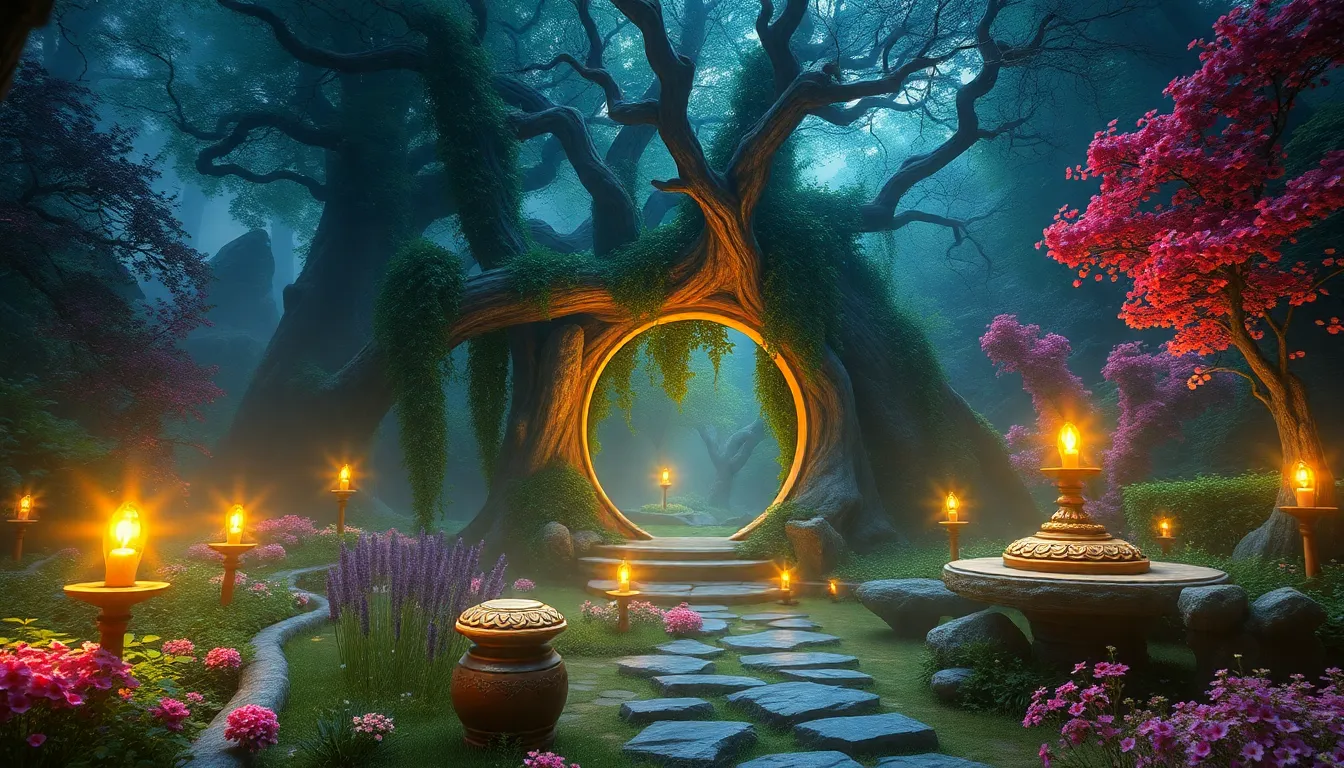The World Tree in Modern Literature and Film: Exploring the Mythic Tree in Contemporary Storytelling
I. Introduction
The concept of the World Tree is deeply rooted in various mythologies, often symbolizing the interconnectedness of all life and the cosmos. It serves as a bridge between different realms, including the heavens, earth, and the underworld. This archetype has evolved through centuries of storytelling, appearing in diverse cultural narratives as a potent symbol of life, growth, and the cyclical nature of existence.
This article will focus on the representations of the World Tree in modern literature and film, exploring how this ancient symbol continues to resonate in contemporary storytelling. By examining various works, we will uncover the significance of the World Tree archetype and its role in addressing themes relevant to today’s society.
II. Historical Context of the World Tree Myth
The World Tree has origins in various cultures, each interpreting its significance through unique lenses. Notable examples include:
- Yggdrasil: In Norse mythology, Yggdrasil is the immense and central sacred tree that connects the nine worlds.
- Tree of Life: Found in many traditions, including Christianity and Judaism, symbolizing eternal life and a connection to the divine.
- Bodhi Tree: In Buddhism, the Bodhi Tree is where Siddhartha Gautama attained enlightenment.
Over time, the World Tree archetype has evolved, influencing storytelling and cultural narratives throughout history. Ancient myths have laid the groundwork for modern interpretations, demonstrating the timeless nature of these themes.
III. The World Tree as a Symbol of Connection
The World Tree embodies the concept of interconnectedness, representing how different realms of existence are woven together. This symbolism is particularly relevant in modern narratives, where the World Tree serves as a metaphor for:
- Unity: The tree connects diverse characters and cultures, highlighting the importance of collaboration and understanding.
- Diversity: Just as a tree has many branches, modern stories often reflect a multitude of perspectives and experiences.
Furthermore, environmental themes are deeply intertwined with the World Tree motif. As humanity faces ecological challenges, the World Tree symbolizes nature’s resilience and the need for harmonious coexistence with the environment.
IV. Case Studies in Literature
Numerous literary works incorporate the World Tree motif. One notable example is The Overstory by Richard Powers. This novel intertwines the lives of multiple characters with the fate of trees, particularly focusing on a giant sycamore tree that becomes a central symbol of life and interconnectedness.
The characterization of the World Tree in this narrative illustrates:
- The interconnectedness of all living beings.
- The impact of human actions on nature.
Through the World Tree, Powers conveys themes of environmentalism, the importance of trees in the ecosystem, and the profound connections between humanity and nature. The tree becomes a character in its own right, representing endurance and the need for preservation.
V. Case Studies in Film
Films have also embraced the World Tree concept, utilizing visual and narrative techniques to convey its significance. For instance, in Avatar, the Tree of Souls serves as a central element of the Na’vi culture, symbolizing the connection between all living things on Pandora.
The depiction of the World Tree in such films often includes:
- Stunning visual imagery that evokes a sense of wonder and reverence.
- Narrative arcs that highlight the importance of protecting nature and the interconnectedness of life.
In The Fountain, the tree symbolizes the quest for immortality and the cyclical nature of life and death, further emphasizing the transformative power of the World Tree across different narratives.
VI. The World Tree in Fantasy and Science Fiction
In the realms of fantasy and science fiction, the World Tree continues to flourish as a powerful symbol. Notable examples include:
- The Wheel of Time: The World Tree is represented through the concept of the Pattern, illustrating the interwoven fate of all characters.
- The Chronicles of Narnia: The tree in Narnia serves as a symbol of growth, wisdom, and the gateway to other realms.
In fantasy narratives, the World Tree often serves as a tool for world-building, creating rich mythologies that enhance the storytelling experience. In contrast, science fiction may use the World Tree to explore futuristic themes of technology and nature, examining how they coexist or conflict.
VII. The World Tree and Themes of Growth and Transformation
The World Tree is also a powerful representation of growth and transformation, both on personal and communal levels. It reflects:
- The journey of characters as they evolve and adapt to their environments.
- The communal growth of societies as they learn to coexist and protect their shared home.
Moreover, the World Tree highlights the transformative power of nature and mythology in storytelling, providing a lens through which contemporary societal issues—such as climate change and social justice—can be addressed. By reflecting these issues, the World Tree remains relevant and resonates with modern audiences, serving as a beacon of hope and a call to action.
VIII. Conclusion
In summary, the World Tree archetype plays a vital role in modern storytelling, bridging ancient myths with contemporary narratives. Its symbolism of interconnectedness, unity, and growth resonates deeply in literature and film, offering profound insights into the human experience and our relationship with nature.
The enduring appeal of the World Tree lies in its ability to adapt and evolve, reflecting the aspirations and challenges of society. As we continue to explore this archetype in future literature and film, the World Tree will undoubtedly remain a powerful symbol of life, transformation, and the interconnectedness of all things.




